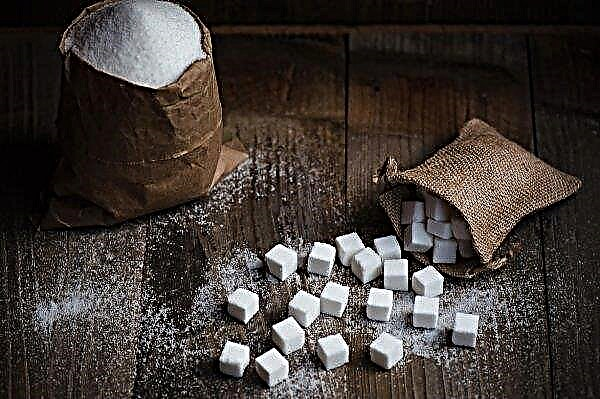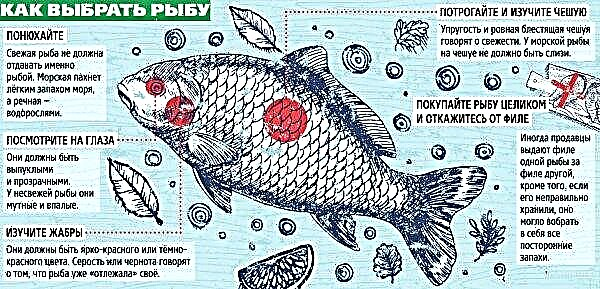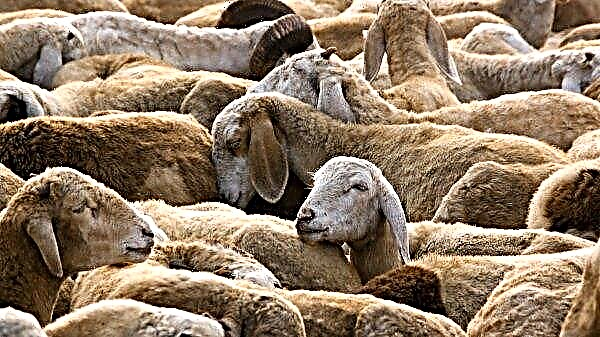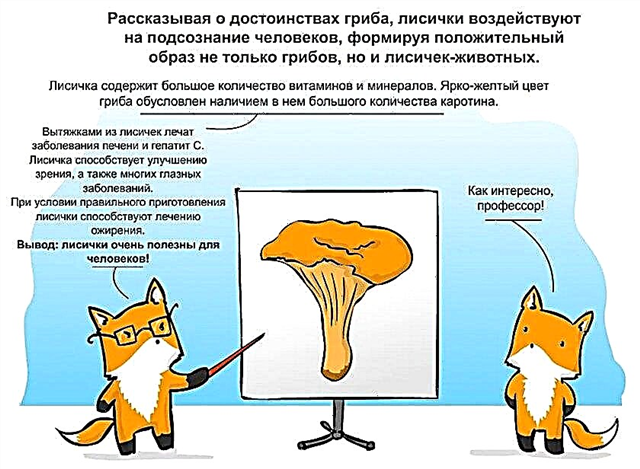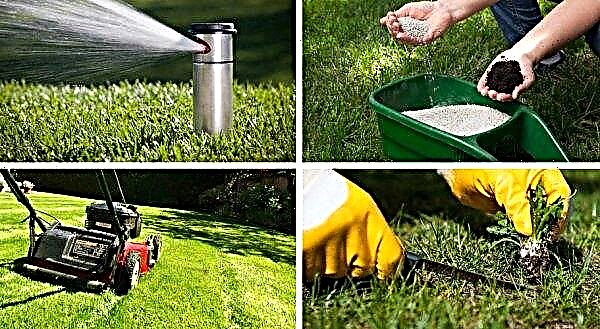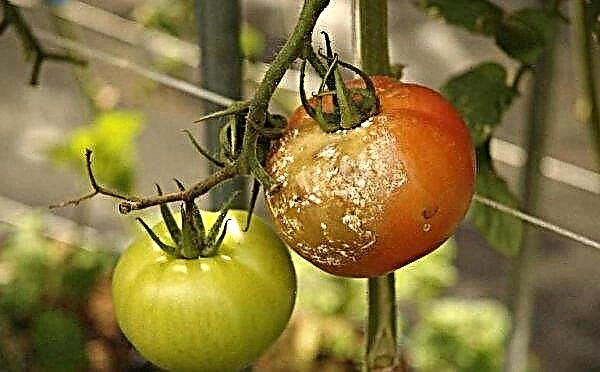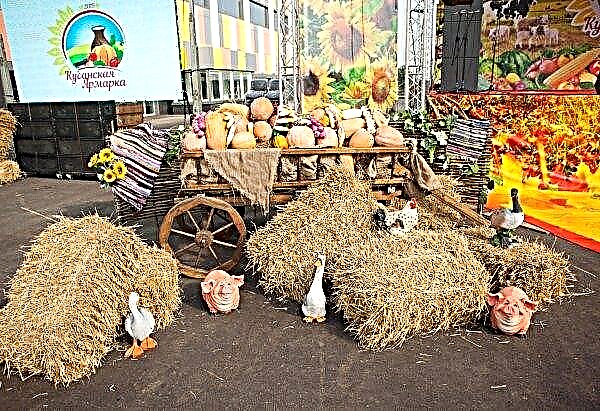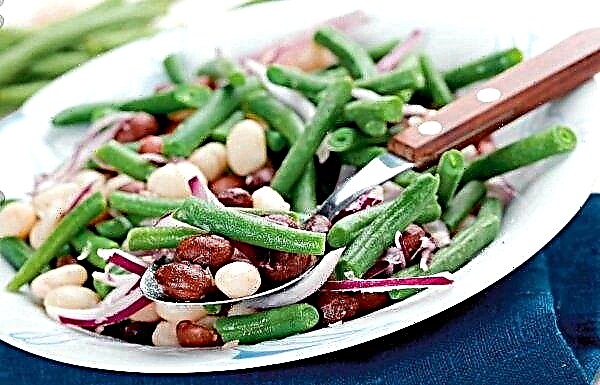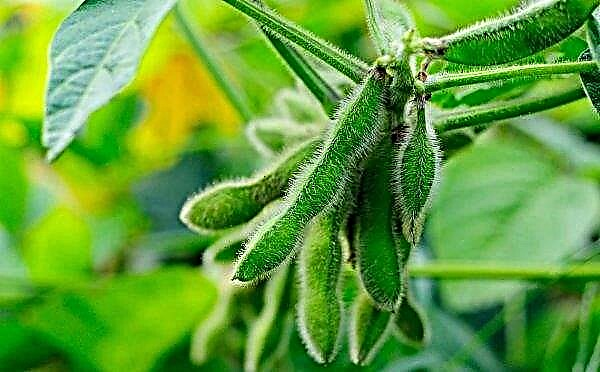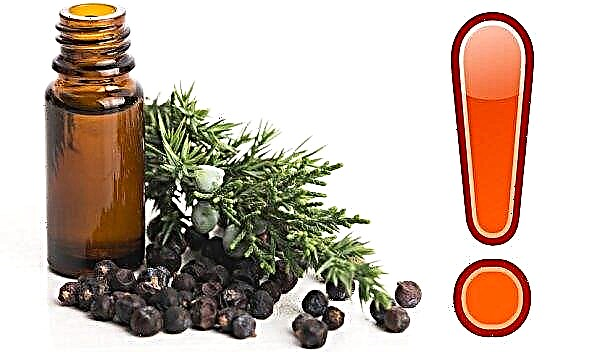Since childhood, everyone knows the amazing taste of raspberries. Many are looking forward to the summer to enjoy this sweet berry. Besides the fact that raspberries have an exceptionally pleasant aroma and taste, it also benefits the human body. Due to the presence of a large number of vitamins and minerals, raspberries become indispensable for winter vitamin deficiency and acute respiratory infections. Of particular interest to gardeners are the repair varieties of this plant, which bear fruit throughout the warm season. One of these varieties called Polka will be discussed below.
Characteristics of large-fruited remont raspberry polka
Raspberry Polka was bred in Poland more than 30 years ago by a breeder named Jan Danek. With success, she took root throughout Europe after the 2003 international agricultural exhibition. At the moment, this variety is the leader of Poland's planting material in terms of export. In European countries, remontant polka is considered the most popular for cultivation.
Did you know? Raspberries have been known to man since time immemorial. The first mention of this plant was found in Greece on the island of Crete, which dated back to the 1st century BC. e. In the Moscow region, Prince Yuri Dolgoruky first engaged in its cultivation in the XII century.
Appearance, size and type of berries, productivity
Polka bushes grow up to a height of 1.5 m. There are few thorns and they do not interfere with caring for the bush. White inflorescences are on the tops of branches and near leaves. Drupe seeds mature large, up to 3 cm, weighing up to 7 g. They have a regular conical shape that resembles a thimble. Bunches number up to 10 berries of bright scarlet color with a rich raspberry flavor and smell. Among gardeners, it is believed that the fruits of this variety have an optimal balance of sour and sweet tastes.
Polka is the best dessert raspberry variety in Europe. Begins to bear fruit already in the first year after planting. From the bush you can collect up to 4 kg of raspberries, which is a high yield. Harvest variety can give twice a season. For commercial purposes, it is recommended to give preference to one main crop, which ripens already when the bulk of the berries in the gardens have long been harvested (July-October).
Advantages and disadvantages of the variety
- The main advantages of this variety:
- ideal taste;
- high productivity;
- long term fruiting (3 months);
- berries remain dry upon separation;
- high shelf life and transportability of raspberries (up to 10 days);
- a small number of thorns on the branches; small thorns;
- resistance to most viruses and fungi;
- the versatility of the use of the crop (it lends itself well to freezing, you can preserve, make fruit drinks and jelly).
- The description of the disadvantages is as follows:
- low frost resistance (requires warming and trimming for the winter);
- it does not tolerate drought and heat (at + 35 ° C, it is necessary to create an artificial shadow for the plant and organize drip irrigation);
- requires frequent feeding;
- frequent diseases of the root system (cancer and rot) occur.
Agricultural technology
For the effective cultivation of raspberries, you must follow the rules of agricultural technology regarding a particular variety. This will help to avoid common mistakes in planting, care and harvesting. Proper pruning and preparation for winter will allow you to feast on berries for more than one season.
Video: Repairing raspberries Polka
Seat selection
For planting cuttings, it is worth choosing a well-lit place. If the terrain is southern, then a diffuse shadow is needed. The soil is not critical for the development of the plant. Polka bears fruit well on any type of soil. However, if it is possible to choose, a slightly acidic or neutral soil, fertilized with compost (2 buckets per landing pit) is preferable.
Soil quality is not as significant in this case as proper top dressing and fertilizing. Before planting for 45 days, the site is sprinkled with a mixture of manure, superphosphate and potassium sulfate (20 kg / 70 g / 50 g). Mindful of the tendency of raspberries to rot roots, you should not choose areas with closely occurring groundwater.

Landing and care
Seedlings should be purchased from trusted suppliers. It is better if the root system of the seedling is in a container with soil. If the roots are open, you need to check their appearance so that there are no signs of rot and other lesions, neoplasms, cracks. In this way you need to examine not only the roots, but the entire seedling. Its height should be at least 40 cm, thickness - more than 8 mm. At the base of the shoots should be 3 buds, from which fruitful branches will subsequently grow. Raspberries are planted either before the vegetation begins, or after its end (in spring or late autumn.)
Landing is as follows:
- A planting hole is dug for a fortnight before the rooting of the plant (diameter - 40 cm, depth - 50 cm).
- Maintain a distance between holes in the same row of 50–70 cm, between planting lines - 120–150 cm.
- 2 compost buckets are added to the hole.
- Gently distribute the rhizome of the seedling in the pit, place the plant horizontally and sprinkle with soil (the root neck should be at a height of 3 cm above the ground).
- The soil is lightly compacted and a recess is made for irrigation.
- Water the seedling with one bucket of water.
- After absorbing water, the hole is mulched with straw or peat.
- Cut the upper part of the plant under the root (it will give shoots that will bear fruit in the same year).

For proper care, raspberries need to be weeded, watered, fed and tied.
Weeding involves the removal of weeds around a raspberry bush. Make it a hoe at a time before the weeds have yet reached impressive size. This manipulation gives additional loosening and aeration of the soil. When weeds are removed, the cause of many fungal, bacterial diseases and parasite infections is also eliminated. Weeding is best after absorbing moisture when watering.
Watering Polka should be done regularly from the beginning of the movement of juices and until winter pruning. All 3 months of fruiting must be monitored for soil moisture. In order to determine the time of irrigation, a recess is pulled out near the roots of the bush to a depth of 20 cm, while the earth should be slightly moist. In the heat, watering 10 liters of water under each plant is required weekly. Before the end of the growing season they produce abundant watering in preparation for wintering. Under each raspberry bush, 20-30 liters of water are poured.

Top dressing is applied three times per season:
- With the advent of spring, urea is scattered before the growing season (30 g per 1 m²). This is done on top of the snow.
- During swelling of the buds, the bushes are fertilized with a mixture of humus (1.5 kg), potassium salt (3 g), nitrogen (3 g) and phosphorus (2 g) fertilizers.
- After trimming the shoots for the winter, 1 bucket of humus, nitrogen and phosphorus fertilizers are introduced under each plant.

Garter is made in order to protect whole branches with fruits. With a strong wind or rain, the bushes break and bend to the soil, the fruits get wet and get dirty. To avoid this, branches are tied to a special design - trellis. In this form, it is much more convenient to collect raspberries.
Pest and Disease Control
The life cycles of most pests do not correlate with the cycles of remont raspberries, because it ripens later than the parasite larvae awaken. In addition, pruning for the winter under the root, cleaning of branches and leaves, digging the ground and spraying it with copper sulphate, which completely helps to avoid damage by harmful insects, is carried out.
The only exception is aphid. It affects the plant and sucks its juices. To destroy the aphids, the Polka bushes are treated with the Aktopit biological product solution. After processing, the berries are suitable for food within two days. Attracted to raspberries and ladybugs (natural enemies of aphids), planting nearby calendula and herbs with a spicy smell.

Polka is not susceptible to most types of diseases, but some of them can still affect the plant:
- Root cancer - characterized by the appearance of ugly growths on the roots of the bush, yellowing of the leaves and the spoiled taste of the fruit. It is impossible to cure the plant from this disease. It is only possible to prevent it by treating the roots with copper sulfate before planting (100 g per 10 liters of water).
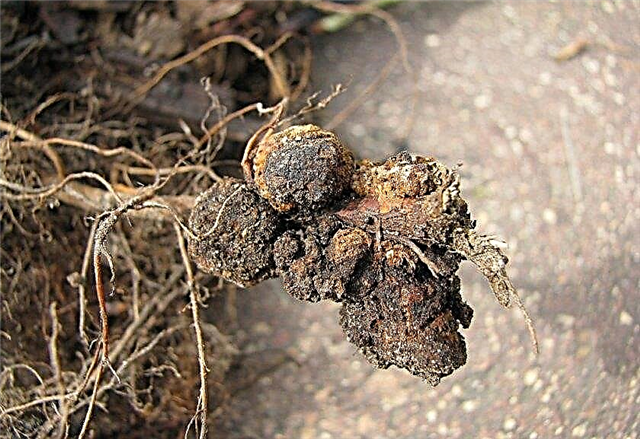
- Verticillus wilting - an incurable fungal disease. The plant withers and dies. A characteristic feature is the situation when half of the bush is green and half is yellow. With this disease, the bush must be dug up and burned. On this site, it is possible subsequently to grow only plants resistant to verticillic wilting.

- Anthracnose - fungal disease. Violet spots form on the leaves and branches, later they turn gray with a burgundy border. Leaves become dry and fall off. To prevent anthracnose, the plant is sprayed with a 3% solution of Bordeaux fluid before the start of the growing season. During the formation of buds and after harvesting, raspberries should be sprayed with a 1% solution of Bordeaux fluid. Trunk circles should be regularly dug up and loosened.
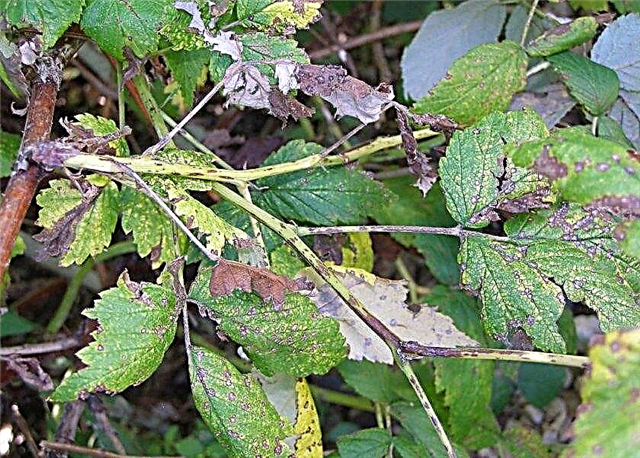
Trellis
Although Polka is not a very tall plant, its branches often bend under the weight of large berries, which in the brush can be up to 10 pieces. So that the bushes do not bend and break, as well as for uniform sunlight on the berries and the convenience of harvesting, raspberry branches are tied to trellises - special devices for fixing the branches, which are vertical columns with a horizontally reinforced wire stretched between them or a rope.
Did you know? Dried raspberry leaves can fully replace tea. To do this, rub them in your hands until blackening and dry thoroughly.
Trellis can be of two types:
- Single lane - when a series of columns and crossbeams is installed on one side of the plants (optimally - at a distance of 30–40 cm from the bush) and branches are tied to them at an angle of approximately 15 °. Such a trellis is preferred for small plantings.
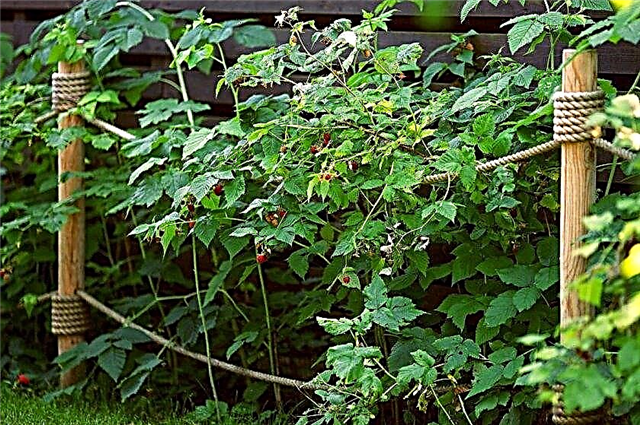
- Two-way - the trellis is installed on both sides of a row with raspberry bushes. The branches are tied alternately to one or the other side, which allows you to evenly distribute them.
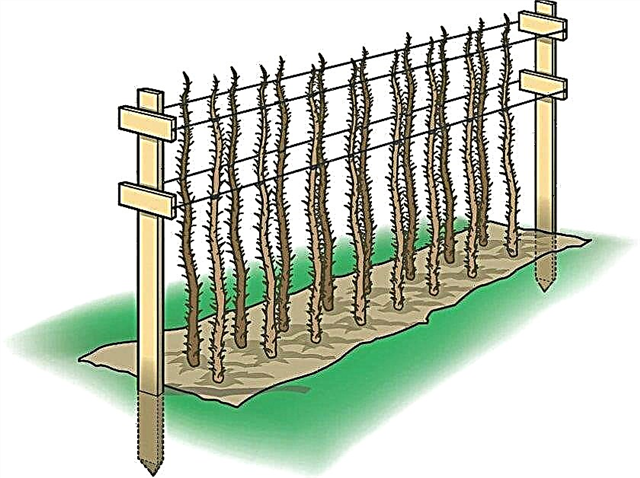
Breeding
There are two main ways to propagate raspberries:
- From the center of a two- or three-year-old bush, root offsprings with a diameter of approximately 20 cm are dug. Do this in spring or autumn. The dug part of the bush takes root in a new place. The remaining plant for the season is able to give up to 20 such offspring.
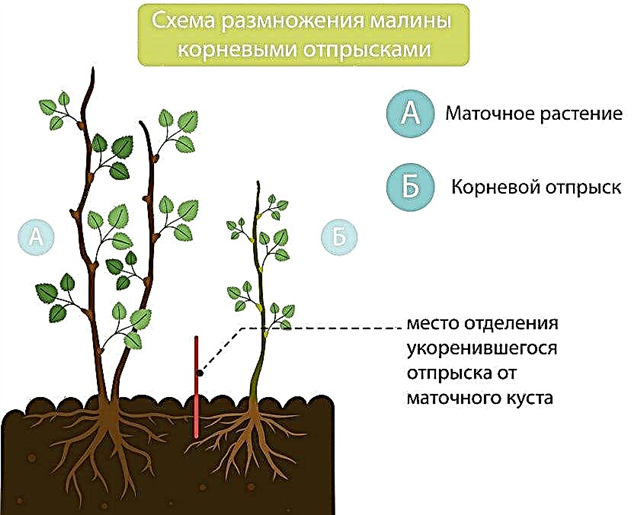
- Green cuttings are taken from annual shoots in May. Slices must be treated with charcoal to avoid infection. The cuttings are placed in a nutritious light soil mixture, and a month later, along with a lump of land, they are planted on the site.
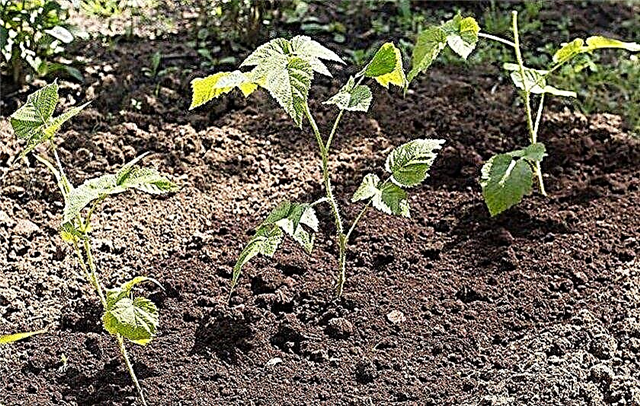
Features of spring and winter pruning
When and what crop it will produce in the next season depends on the nature of pruning Polka:
- If there is a desire to get a crop 2 times (the first in July, the second - at the end of August), then pruning is done twice. For the first time in the spring (in April), this pruning is rather sanitary in nature and is possible only if the bush has not been pruned for root in the winter. The second time in the fall, before the frosts, green shoots with berries and also damaged shoots are harvested. Annual branches and those on which the summer crop is formed are left. No more than 5-7 of the strongest branches are left for the winter.
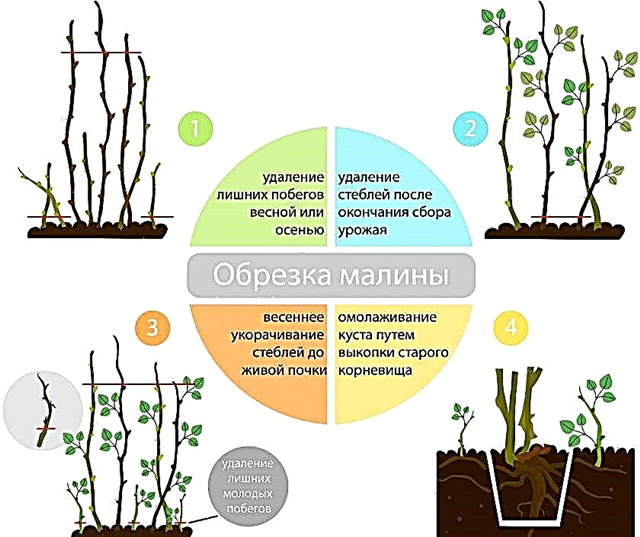
- If they plan to get the crop once from the end of July to the end of September, then for the winter the bush is simply cut off under the root. This is also the prevention of raspberry diseases. Next spring, fresh shoots will go from the root, which will give a plentiful harvest.
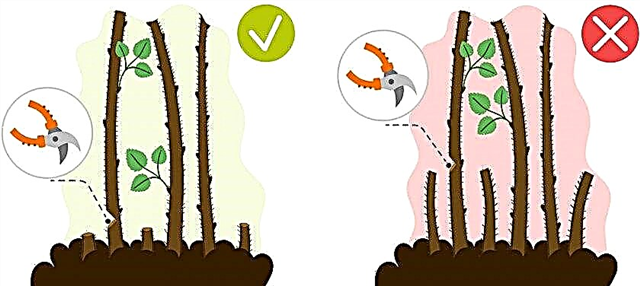
Wintering
For wintering, Polka must be prepared. To do this, cut, remove fallen leaves and cut branches, fertilize, loosen the soil, carry out abundant watering and mulch the soil in the near-stem circle with sawdust or straw.
Important! Among gardeners, it is believed that it is better to bear raspberries of the Polka variety once, that is, with double fruiting, the second crop has every chance of not ripening before the freezing begins. In addition, two crops deplete the plant, and the berries become small and dry.
If wintering leave uncircumcised branches, then they are worth bend and lay on the ground with the trellis. Then you should cover them with agrofibre in two layers.

Harvesting and transportation
Drubs of Raspberry Polka ripen in the first half of August, and fruiting itself can last until frost. Berry picking is recommended in dry weather (preferably in the morning). It is advisable to fold raspberries into wide containers or drawers with a layer of no more than 15 cm. Polka tolerates transportation perfectly.
Important! Until the berries have cooled completely, the container is not covered with a lid, since the condensation formed will lead to wetting and spoilage of the product.
For longer storage of fresh berries, they must be placed in the refrigerator. Berries must be removed from the garbage, removed the stalks, put in food containers and refrigerated. In this form, raspberries can be stored for 7-10 days.

Raspberries are an extremely healthy berry for the human body. It helps to recover from colds, rejuvenates the skin, and is an antidepressant. Many gardeners mistakenly believe that this plant does not require any maintenance, and as a result complain of shredding berries and shrubs. With careful care and compliance with the rules of planting, pruning and propagating, Polka raspberries will bear fruit for more than 3 months with large berries with a unique taste and aroma.
Network user reviews
In August, my children burst the first berries with pleasure. Large, smooth, shiny, sweet. But in September she paused, became sour, the children turned away from her. Maybe a lack of sun, maybe cold nights, in general, I'm still in search of a repair raspberry ... This, of course, is in my conditions. It grows behind the house on the east side.










